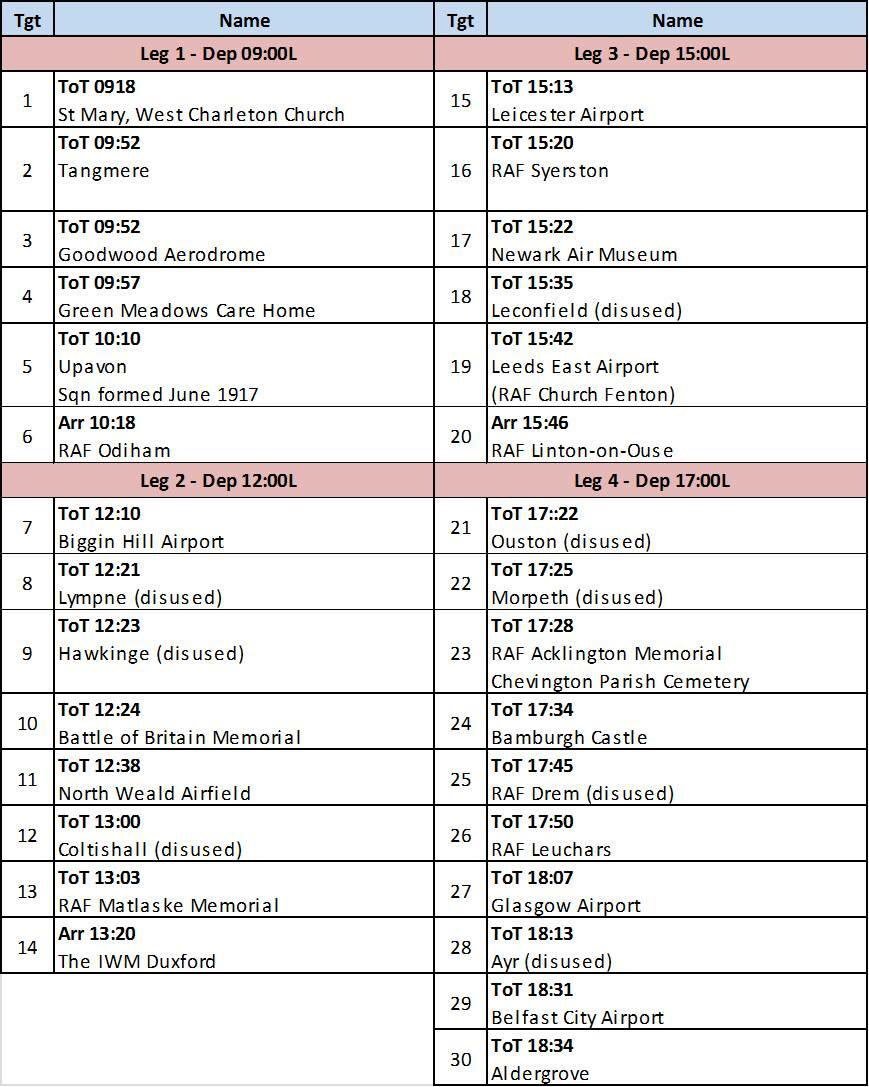

https://twitter.com/RAFTucanoTeam


And 54 Squadron is the ISR OCU22A wrote:"72 Sqn the only surviving RAF Squadron to have flown Spitfires in the BofB"
But 41 Sqn still exists as the T&ES and they flew Spits throughout WW2.
"On 1 April 2010, the Boscombe Down-based Fast Jet Test Squadron (FJTS) was amalgamated into 41(R) Squadron to create a new entity, 41 Squadron Test and Evaluation Squadron, or "41(R) TES", in which form it continues today".
There are three images on the RAF Linton-on-Ouse page but won't link here https://www.raf.mod.uk/raflintononouse/ ... 4A761D280872 SQUADRON CENTENARY – TUCANO COMMEMORATIVE PAINT SCHEME
A specially painted Tucano Fast Jet Training aircraft has been unveiled at RAF Linton-on-Ouse to celebrate the 100th anniversary of 72 Squadron, Royal Air Force.
The aircraft has been painted in the colours of a World War II Spitfire as operated by 72 Squadron during the Battle of Britain defending the country from invasion in 1940. Its registration reads RN-S ‘Enniskillen’ in recognition of the original World War II Spitfire. The name Enniskillen was written on the side of Spitfire RN-S to indicate that funds to build it were raised by The Belfast Telegraph newspaper. The aircraft also has the names of two former members of 72 Squadron displayed at the side of the cockpit; Squadron Leader Des Sheen DFC and Leading Aircraftman Jim Barton.
Squadron Leader Sheen served with 72 Squadron during the Battle of Britain and was later to command the Squadron flying Vampire Jet Fighters. Leading Aircraftman Barton was an engine fitter. Although the two men never served with each other during their time in the RAF their stories were connected by their respective service on 72 Squadron. Jim Barton founded the 72 Squadron Association and Des Sheen became the Association’s first president, hence their names now share the same aircraft.
The commemorative Tucano aircraft will be taking part in Airshows around the country during the summer where it will visit as a static display aircraft. Additionally, as part of its Centenary celebrations, 72 Squadron (Reserve) will be conducting a nationwide Grand Flypast on 27th June 2017 which will be led by the commemorative Tucano.
https://www.raf.mod.uk/raflintononouse/ ... 278FE809C572 (RESERVE) SQUADRON CENTENARY – GRAND FLYPAST
27th June 2017 will see 72 (Reserve) Squadron from RAF Linton-on-Ouse in North Yorkshire conducting a nationwide Grand Flypast in honour of its Centenary.
Members of the Yorkshire and Humberside media are invited to RAF Linton-on-Ouse for photographs and interviews with 72 (Reserve) Squadron aircrew when they land at 3.45pm.
Starting at RNAS Culdrose, the route will take 4 of the Squadron’s Shorts Tucano T Mark1 aircraft across the South Coast visiting many former RAF Stations that were operational during the Second World War with stops at RAF Odiham, Imperial War Museum Duxford and RAF Linton-on-Ouse on the way to the final destination at JHFS Aldergrove in Northern Ireland. One of the Tucanos will be newly painted in a specially designed commemorative livery. This commemorative Tucano will also be visiting RAF Stations and airshows around the country this summer as a static display aircraft.
At IWM Duxford 72 (Reserve) Squadron will be meeting members of the media next to their aircraft from approximately 1.40pm for photographs and interviews.
2017 marks the centenary of RAF Duxford. Work began to build Duxford's airfield in 1917 and it became pivotal to the air defence of Great Britain throughout the Second World War - particularly during the Dunkirk evacuation, the Battle of Britain and D-Day operations - and into the Cold War era.
Over the past 100 years, Duxford has been a continual witness to world-changing events, where ordinary people have shared extraordinary experiences. As part of the commemoration of its centenary, IWM Duxford shares surprising stories and personal memories from across the former RAF fighter station, our museum and the collections here.
72 Squadron has a rich history as one of few Squadrons still in active service today to have operated the Spitfire during the Second World War. Personnel from 72 Squadron were members of ‘The Few’ who defended the country from invasion during the Battle of Britain.
72 Squadron performed Air Defence and Convoy Protection duties based in Northern England at the beginning of the War before moving South to assist with the Dunkirk evacuations in June 1940. It was later in 1940 that the Squadron earned its Battle Honours for the Battle of Britain after which the Squadron moved to conduct operations in North Africa, Malta and Austria, supporting Allied forces as they progressed towards Germany at the conclusion of the War.
After the Second World War, 72 Squadron continued to operate fighter aircraft into the Jet-era, with the Vampire, Meteor and Javelin before disbanding and reforming as a helicopter unit in 1961. Initially operating the Belvedere, this was replaced in 1964 by the famous Wessex helicopter which served the Squadron for the next 38 years in operations ranging from disaster relief in Malaya to supporting security forces in Northern Ireland.
In its present form 72(Reserve) Squadron is the UK’s Basic Fast Jet Training Unit responsible for training Royal Air Force, Royal Navy and International Defence Training pilots in the basic skills required to fly frontline fighter aircraft using the Tucano. Students undergo rigorous training in general handling, aerobatics, low-level navigation, formation and instrument flying culminating in the award of the coveted Pilot’s Brevet. The 72(Reserve) Squadron Motto of ‘Swift’ combined with the Squadron Crest both share a special connection to the Pilot’s Brevet which displays wings modelled on those of a Swift.